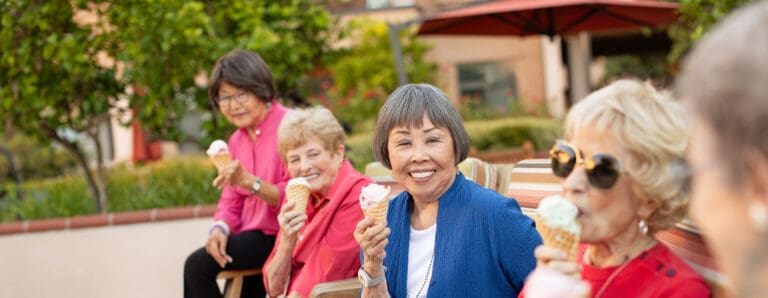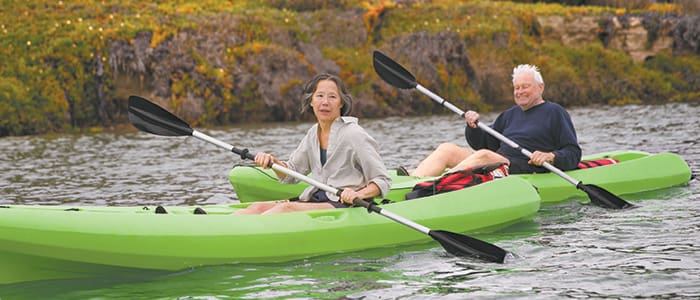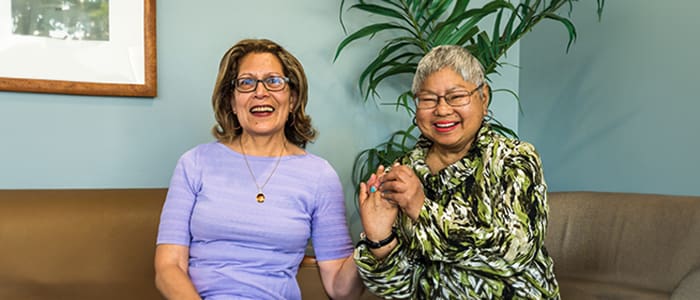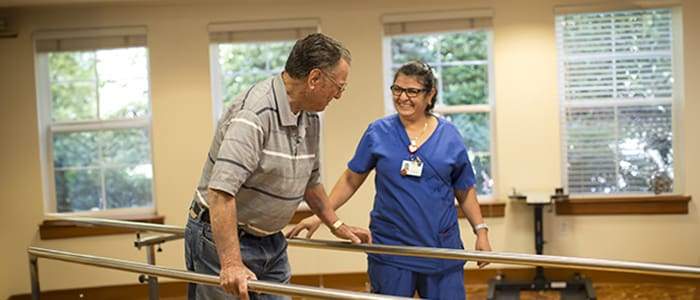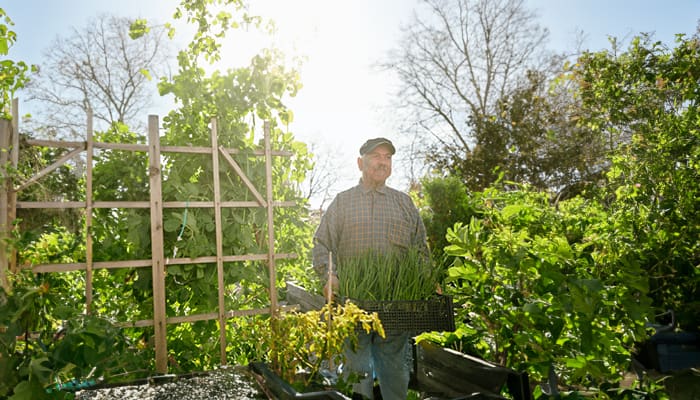May 23, 2020
Five Tips to Increase Physical and Mental Wellbeing as We Age
Everything starts with movement. As we age, many of us
experience a decline in activity level whether it’s due to health issues,
weight gain, or concerns about falling and injury. As the director of the
Walnut Village Wellbeing Center (WBC), my approach is to counter this tendency
by finding ways to increase our residents’ activity level, no matter what
limitations they start with.

Part of my job is challenging preconceptions about exercise.
I’ve heard every excuse! “It’s too late to start,” being one of the most
popular. However, when residents see the wide range of ages and abilities of participants
in our wellness program (including one of our regulars that comes down in a
power chair to ride a recumbent bike) they realize that excuses are just that:
excuses.
Here are my top five tips to increase your physical and mental wellbeing, no matter what limitations you may have:
- Get moving: Whether it’s Sit and Stretch yoga, Tai Chi, a balance class, line dancing or strength training, the key is to find something that’s enjoyable enough to do on a regular basis. Even short bouts of exercise have been proven to lower levels of depression and increase overall health.
- Join a group activity: Socializing is a great way to stay both physically active and mentally stimulated. Whether it’s joining a committee, volunteering or getting involved in a spiritual community, being part of a group dedicated to a particular cause or goal can add meaning and purpose to our lives. At the WBC, one of things that keeps residents coming back week after week is that socialization is integrated into everything we do. You can always tell when there’s a class in session from the laughter heard down the hallway.
- Play games: Crossword puzzles, Sudoku, bridge clubs are all great ways to stimulate your mind. Walnut Village also offers Dakim(R) Brain Fitness which helps to improve memory, focus and attention. One of our most successful programs at the WBC has been chair volleyball. Strategy, teamwork and comradery are evident as residents work together to try and keep the ball from hitting the ground as long as possible.
- Figure out what you like! Many of our newer programs have come from resident suggestions. A few months ago we developed a HIIT (High Intensity Interval Training) boot-camp class for those residents who wanted more of a challenge with their cardiovascular fitness. We also have worked with residents with Parkinson’s to develop a no-contact boxing program tailored to their needs. There’s been a great deal of exciting research illustrating the benefits of gross motor movements in helping to relieve certain symptoms of Parkinson’s, but, as it turns out it’s also great fun! The residents in the class talked it up so much we ended up opening no-contact boxing up to the whole community.
- Define your goals: Many residents come to the WBC with specific goals in mind. These don’t have to lofty, in fact little things, like being able to get out of a low sedan easier or being able to navigate a relative’s home at a family function, can make a huge difference. Europe, with its old cobblestone roads can be particularly treacherous for residents who like to travel. We’ve had multiple residents work with us on their leg strength and stamina for upcoming trips.
One of the most satisfying things about working at the WBC
is seeing how attitudes about exercise and wellbeing can change once residents
start to see progress. Recently a
resident shared the results of her osteoporosis test with us. It showed that
her bone density has remained the same over the past five years. Given that men
and women both lose an average of .5% of their bone density every year after
the age of 50, we were thrilled. The test results were partially attributed to regular
participation in the WBC exercise program.
For all of us, regardless of age or ability, physical and
mental wellbeing go hand-in-hand. At the WBC we see this every day. The more
active our residents are, the more independence they have. The more
independence they have, the more self-confidence they have. The more
self-confidence they have, the more likely they will continue to be active for
as long as possible. It’s all connected.
By Ryan Fillingane, director of wellbeing at Walnut Village Retirement Community
The post Five Tips to Increase Physical and Mental Wellbeing as We Age appeared first on Front Porch.
